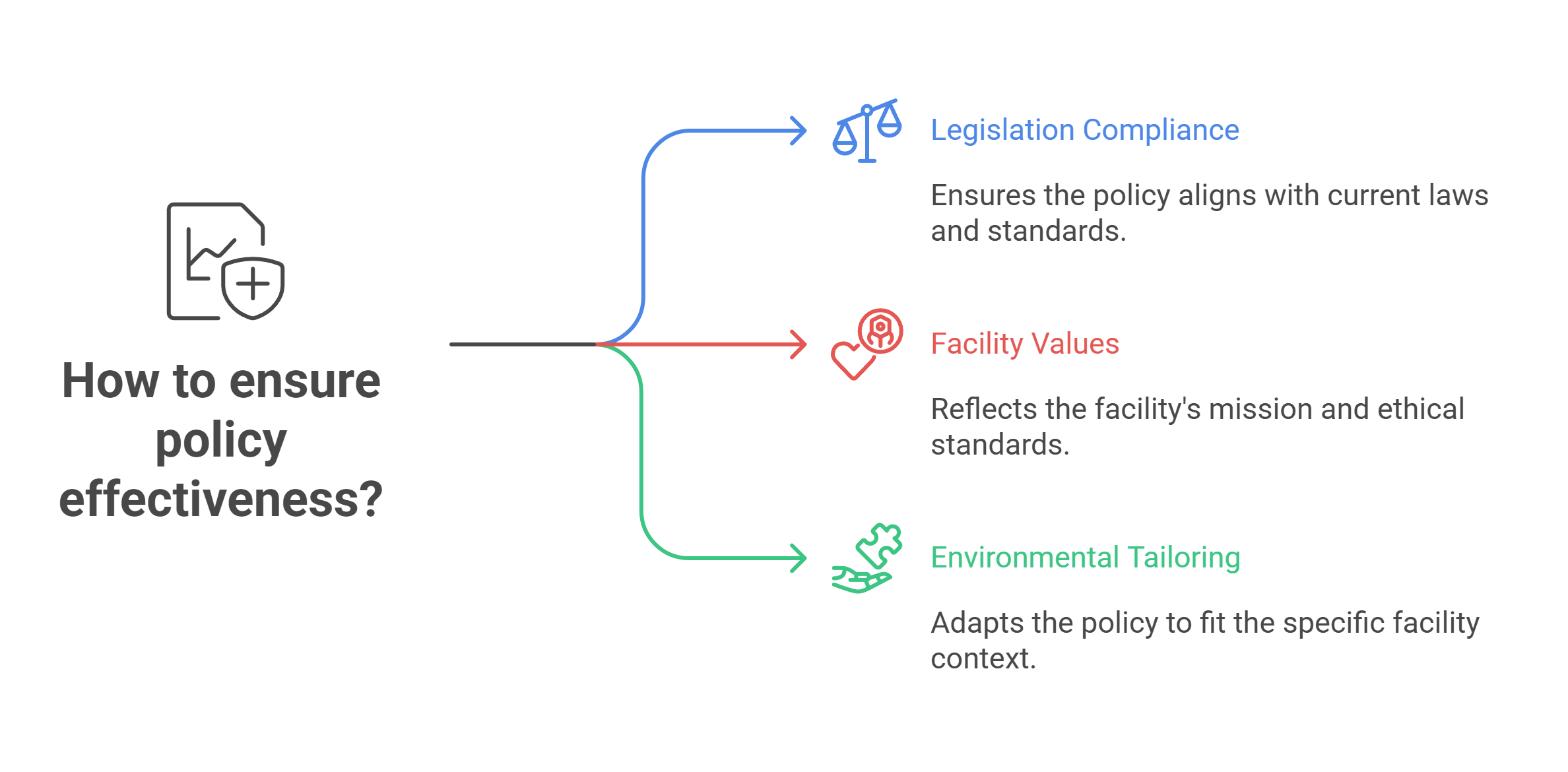Rolling out a new policy in aged care is no small job. You might feel like you are juggling flaming swords while walking a tightrope. There are residents to support, workers to guide, boxes to tick—and it all needs to happen in a way that meets regulatory standards in Australia. This is where a clear implementation checklist becomes your strongest ally.
Whether you manage a small residential facility or a large care network, this step-by-step plan will walk you through what needs to happen, in what order, and why it matters.
Why Policy Implementation Needs a Clear Checklist
Policies are only as good as the way they are carried out. A document gathering dust on a shelf or hidden away in a folder nobody opens is not doing its job.
By following a clear implementation checklist, you avoid confusion, reduce the risk of non-compliance, and build consistency in care across your facility.
This guide is written to keep you on track—without jargon, without the guesswork. And yes, with just a little bit of humour to help the medicine go down.
Step 1: Review the Policy in Detail
Before you start printing anything or calling a team meeting, read the policy from beginning to end. Ask yourself:
- Does this policy match current legislation and Australian aged care standards?
- Does it reflect the values and goals of your facility?
- Are there parts that need tailoring to your environment?
If you are using aged care policy templates from Governa AI, much of this groundwork is already done. But always check that each section lines up with how things run in your particular setting. No two facilities are exactly alike.

Step 2: Assign Clear Responsibilities
Every policy needs a person—or a group—who is responsible for rolling it out. This step avoids the old “everyone thought someone else was doing it” problem.
- Name the responsible person for the policy.
- Assign team leaders or coordinators to support parts of the plan.
- Define what success looks like for each person involved.
Use your staff roster to match roles to responsibilities. Make it clear in writing, and revisit the list if roles shift.
Step 3: Schedule the Rollout
Trying to launch a policy during flu season or on the day of a major audit? Probably not your best move.
- Pick a start date that allows for proper preparation.
- Schedule any required training in advance.
- Build in buffer time for questions, changes, and unexpected hiccups.
Think of this like setting the stage for a show. Lights, sound, actors—it all has to come together at the right moment. A little rehearsal never hurts.
Step 4: Communicate the Policy with Your Team
Now comes the talking part. Your team cannot follow what they do not understand.
- Hold meetings with every staff group—nursing, admin, kitchen, maintenance.
- Use plain language. Break down complex parts.
- Allow time for questions, not just a quick “Any questions?” at the end.
- Follow up with printed or digital copies.
Some policies can feel dry, but they matter. Tie the policy back to the real-life care of residents. When your team sees the “why,” the “how” becomes easier.
Step 5: Offer Training Where Needed
Even the most experienced staff can benefit from refresher training.
- Walk through procedures together.
- Practice new steps during shifts.
- Provide written instructions or visuals for hands-on tasks.
Training does not need to be formal. Sometimes a 10-minute huddle is enough. But always make sure it happens. Relying on “she’ll be right” is a risky bet when you are talking about people’s safety and well-being.
Step 6: Update Your Documentation
This is the bit where a lot of people sigh. But without updated documents, your hard work does not count.
- Add the policy to your official folder system—digital, physical, or both.
- Remove outdated versions.
- Record who received the policy and when.
- Log staff attendance at training or policy meetings.
If your policy documents are stored with Governa AI, updates and version control are easier to track. You can read more about that on the policy templates page.
.png)
Step 7: Embed the Policy into Daily Practice
Reading and training are the first steps. Now the policy needs to be part of the everyday routine.
- Add related tasks to shift checklists.
- Adjust care plans where relevant.
- Make the policy visible—post reminders in work areas.
This is where embedded processes come in. They help turn a policy from “a rule to remember” into “just the way we do things around here.”
Step 8: Monitor for Gaps and Barriers
After rollout, take a step back and observe.
- Are staff following the policy?
- Are there steps being skipped?
- Is it working well for residents?
You do not need to play detective. Sometimes the answer is as simple as a quiet chat or a walk around the floor. Keep your eyes and ears open. Your team will often tell you where things are getting stuck—if they feel they can speak up.
Step 9: Collect Feedback and Adjust
Nobody gets it perfect on the first go. Use feedback to improve how the policy works in practice.
- Invite staff to share what is working and what is not.
- Look at incident reports or quality indicators for clues.
- Update the policy or related procedures if needed.
You might feel like you are “moving the goalposts,” but really, you are fine-tuning the game. Policies need to fit the field, not the other way around.
Step 10: Record Outcomes and Prepare for Audits
Once the policy is up and running, document the outcomes.
- Keep a record of the implementation process.
- Note any improvements in care or compliance.
- Prepare evidence for upcoming audits.
Auditors want to see that policies are not only written but used. A clear paper trail shows that you mean business—and that your facility is run with care and purpose.
Step 11: Schedule Future Reviews
A policy that worked well last year might not fit tomorrow. Make reviewing part of your routine.
- Set review dates (every 12 or 24 months is common).
- Assign who will be involved in the review.
- Check against new standards, laws, or internal changes.
Put it in your calendar. Set a reminder. Future-you will thank present-you for the favour.
.png)
Bonus Tip: Keep It Human
At the heart of every policy is a simple goal: better care for older people.
Policies should not feel like paperwork for the sake of paperwork. When you treat policy implementation as part of the rhythm of good care—like morning tea or a regular chat—you get better outcomes for everyone involved.
And hey, if someone rolls their eyes at “yet another policy,” remind them: policies are like umbrellas. You may not always think about them, but when the rain starts pouring, you will be glad they are there.
Governa AI Can Support Your Next Policy Rollout
You do not have to start from scratch. If you need clear, practical, and ready-to-use aged care policy templates, Governa AI has what you need. Templates are written for Australian standards, reviewed by experts, and designed to fit smoothly into your implementation process.
Visit the Policy Templates Library and take the guesswork out of your next rollout.
Ready to put your policies into practice? Download your aged care policy templates today at Governa AI. Start with a solid checklist, follow each step with confidence, and build a safer, more consistent environment for both staff and residents.
No drama. No mystery. Just good care made better—one policy at a time.










